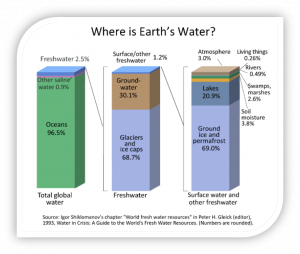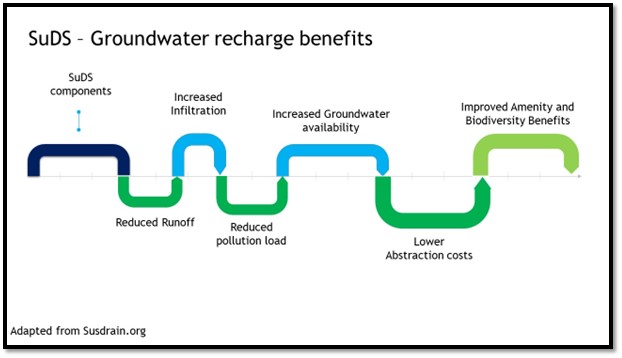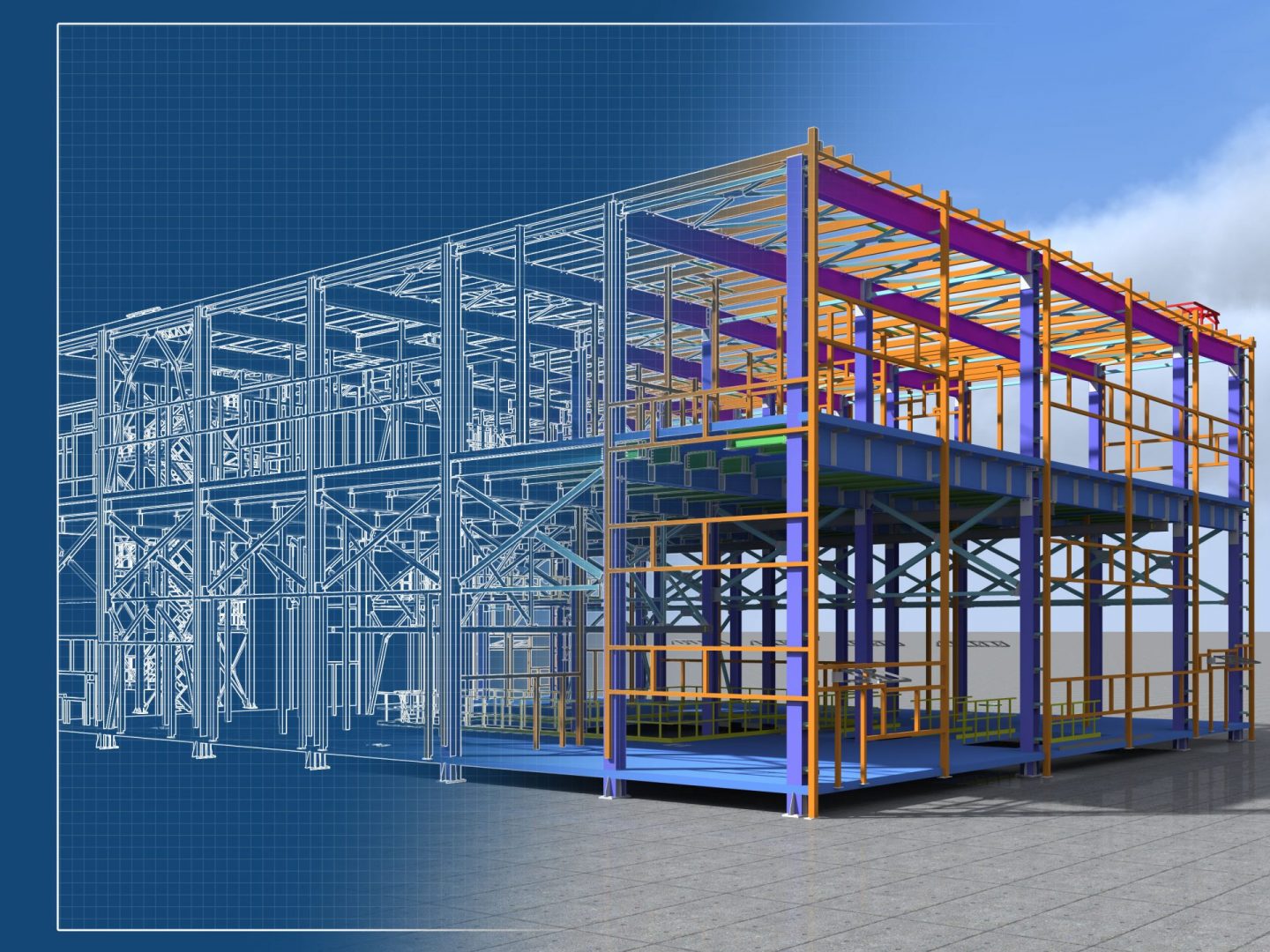Only 1% of the earth’s freshwater is surface water, while groundwater accounts for the other 30%. On this basis alone the importance of managing and maintaining groundwater can not be understated. In undeveloped areas, rain falls on permeable surfaces and soaks into the ground; this process is called infiltration. The balance of surface water and groundwater is altered by the development for housing, industry and other infrastructure.

Traditionally surface water drainage systems drained the hardstanding area and discharged it to the nearest stream. As well as flood implications, pipe and discharge have implications in terms of reduced recharge to groundwater. With rapid urbanisation in Ireland since the 2000s, the requirement to better manage surface water and groundwater in development areas was identified. The Greater Dublin Strategic Drainage Study (GDSDS) was published in 2005 and included a statement that mandated Sustainable Urban Drainage Systems (SuDS) on new developments in the greater Dublin area.
Early efforts at management focused primarily on attenuation tanks for the management of surface water volume. These systems do not address the water quality or groundwater aspects of sustainable drainage systems. As more groundwater abstraction pressures occur in urban and suburban areas, businesses and communities will need to play a more active role in managing and conserving these important water resources.
SuDS can help with increased infiltration of groundwater. This can help maintain natural hydrology, increase the availability of groundwater for abstraction or reduce treatment costs. Properly designed soakaways and infiltration basins promote infiltration as an effective means of managing surface water and supporting groundwater recharge. The benefits accrue when designers understand whether infiltration is possible and allowed.

When any infiltration-based surface water drainage system is proposed, authorities will require groundwater monitoring to ensure the functionality of the proposed infiltration devices. Groundwater monitoring will enable the determination of 1m of free space between the base of the infiltration device and the maximum groundwater level as per BRE Digest 365 and CIRIA SuDS Manual C753 (2015).
Climate change projections indicate increased variability in rainfall and variations in the frequency and magnitude of extreme weather events, with impacts on the higher risk of flooding. Where ground conditions allow the implementation of measures can mitigate changes and provide long-term, sustainable benefits.
Implementation of groundwater infiltration measures can manage and control runoff volumes and flow rates in urban areas, promote groundwater and aquifer body recharge, protect natural flow regimes, and provide biodiversity benefits. While many urban lawns turned a deep shade of brown this summer, nature-based SuDS measures provided a refuge for wildlife in the urban environment. However, the value of traditional water management and the protection they provide should not be overlooked as infiltration will not work on every site.
As flood hazards and climate change increase risk to communities across Ireland, sometimes mimicking natural systems is the most innovative solution.



